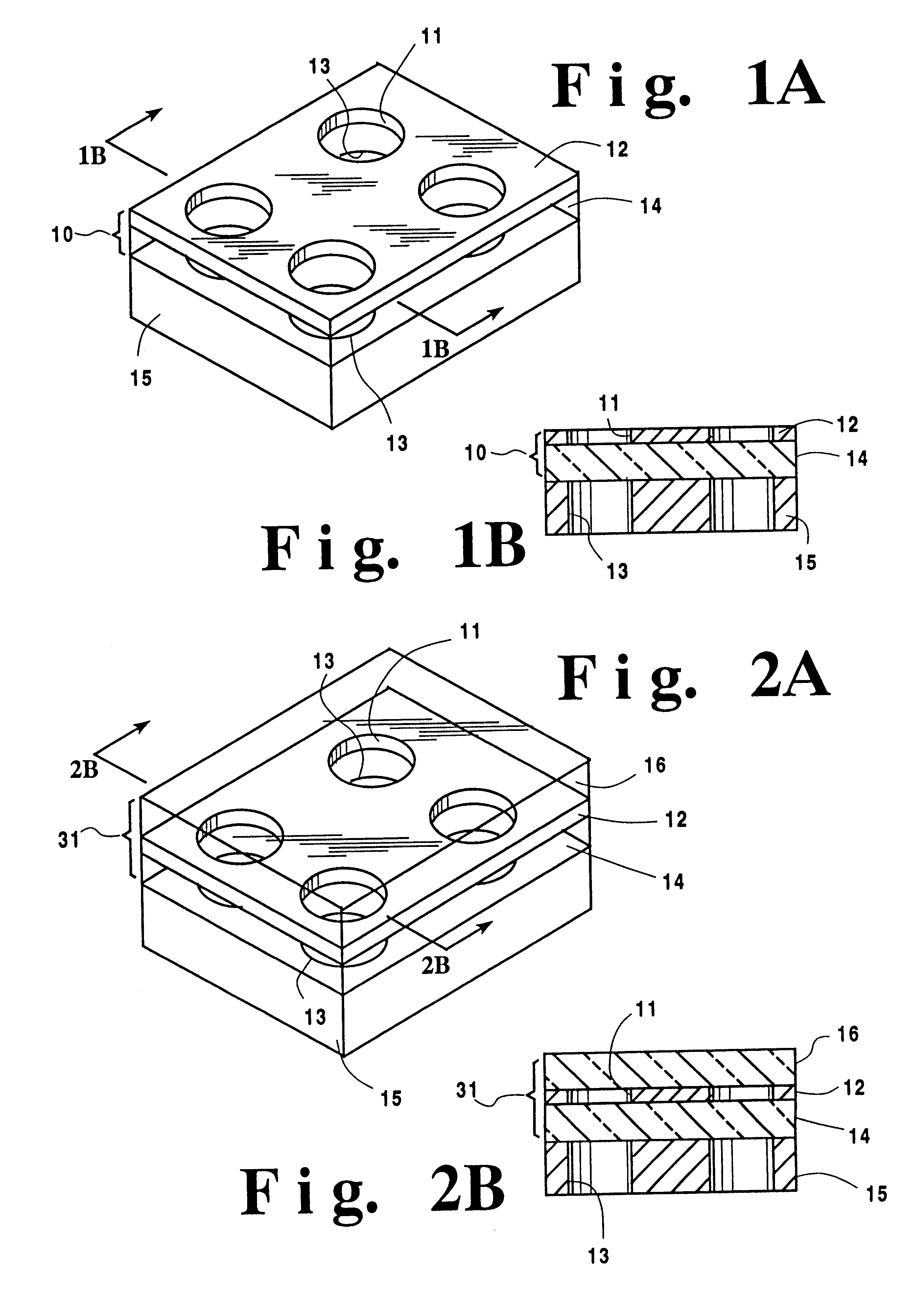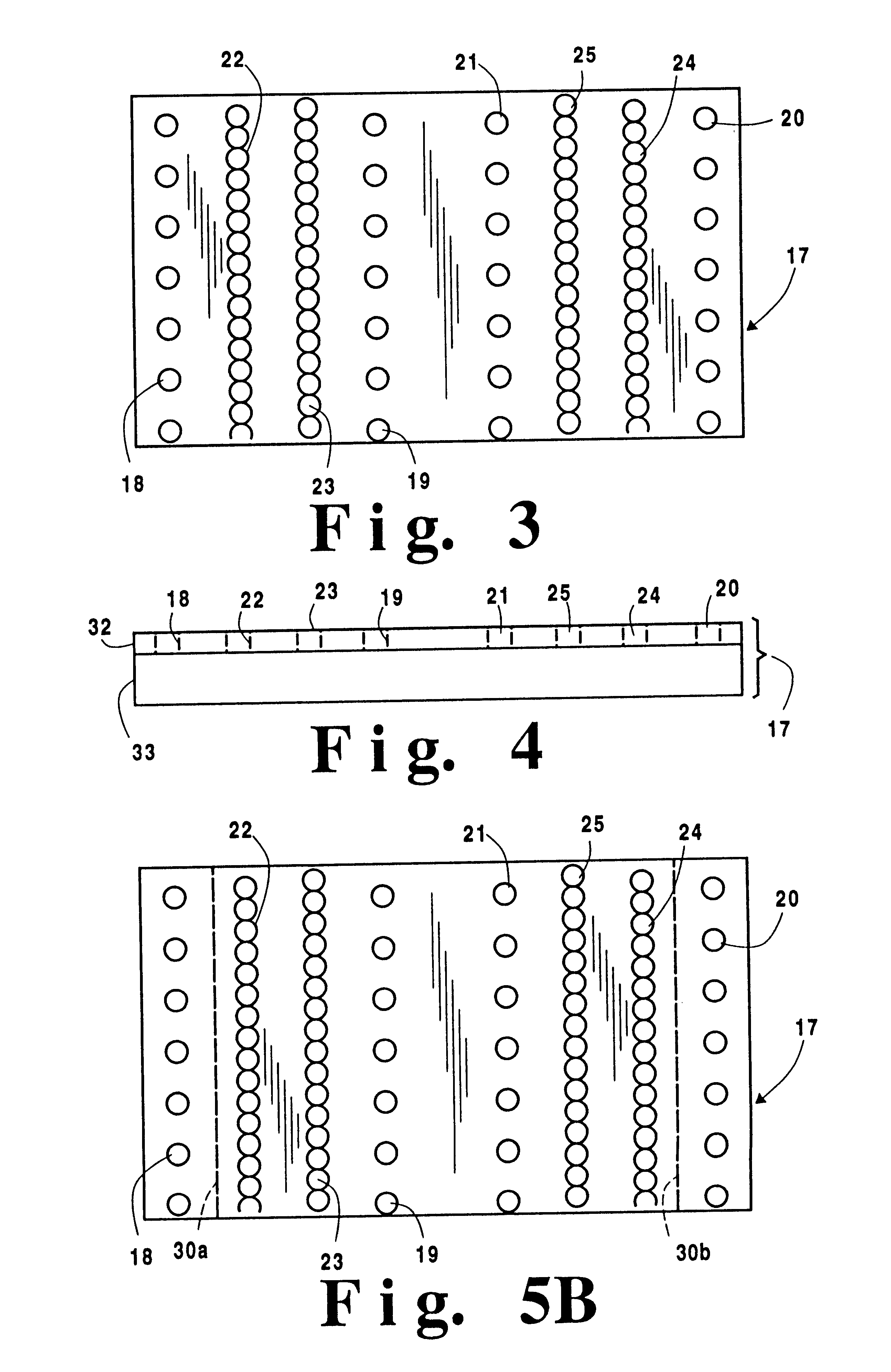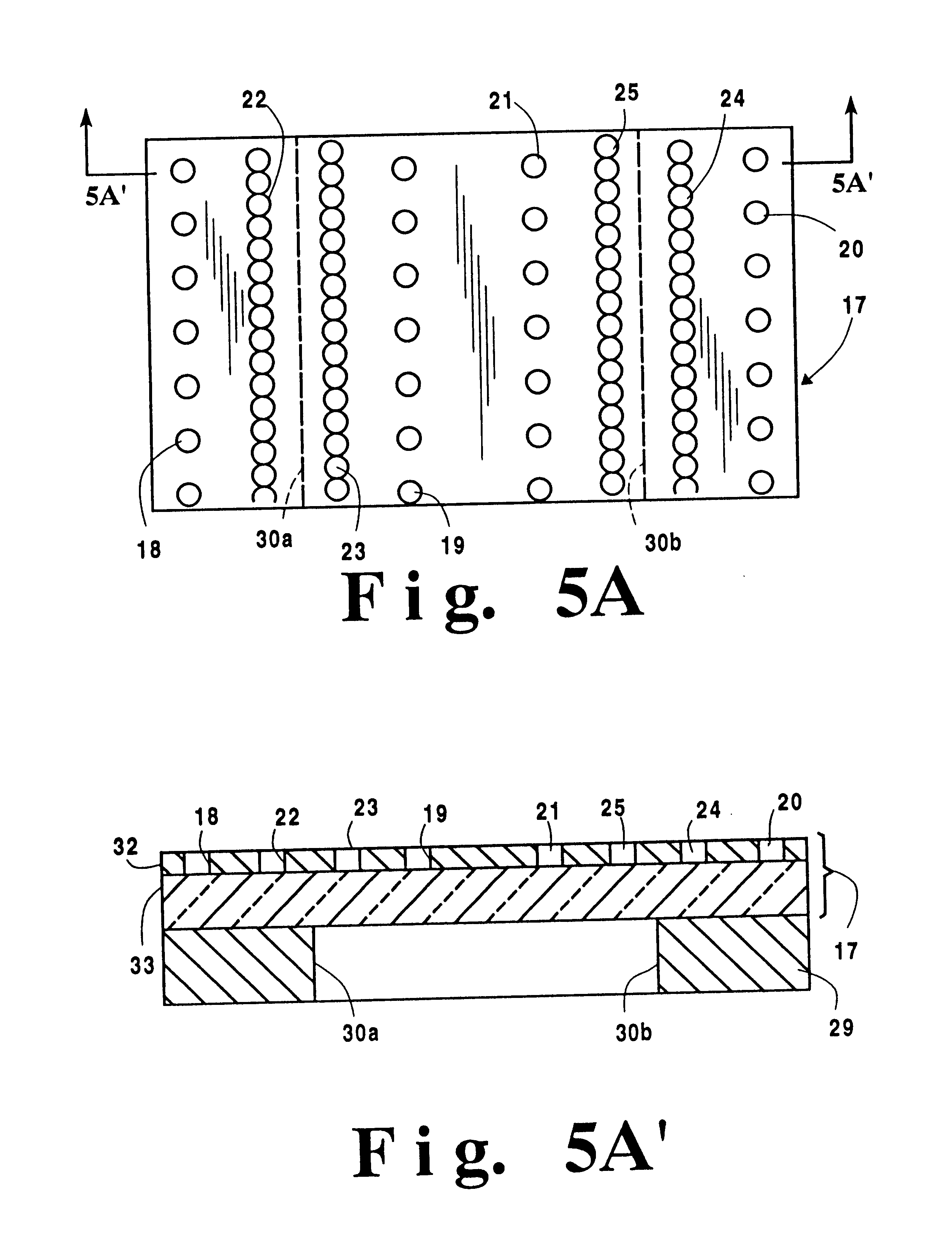Formation of punch inspection masks and other devices using a laser
- Summary
- Abstract
- Description
- Claims
- Application Information
AI Technical Summary
Benefits of technology
Problems solved by technology
Method used
Image
Examples
Embodiment Construction
)
In describing the preferred embodiment of the present invention, reference will be made herein to FIGS. 1-5D of the drawings in which like numerals refer to like features of the invention. Features of the invention are not necessarily shown to scale in the drawings.
Referring to FIG. 1A, a via inspection mask is shown as 10. The mask 10 comprises a transparent substrate 14 having thereon an opaque pattern forming layer 12. Via inspection openings 11 in the opaque layer 12 are shown. These openings 11 are formed by etching of the opaque layer using a laser beam. The via inspection mask 10 is shown overlaying a substrate 15 containing corresponding via openings 13, which substrate is to be inspected for proper positioning of the vias and the size of the via openings on the substrate.
FIG. 1B is a cross-sectional side view of FIG. 1A along lines 1B. Via inspection mask 10 comprises a pattern forming layer 12 and a Mylar transparent substrate layer 14. Other transparent substrates such a...
PUM
| Property | Measurement | Unit |
|---|---|---|
| Transparency | aaaaa | aaaaa |
| Fluorescence | aaaaa | aaaaa |
Abstract
Description
Claims
Application Information
 Login to View More
Login to View More - R&D
- Intellectual Property
- Life Sciences
- Materials
- Tech Scout
- Unparalleled Data Quality
- Higher Quality Content
- 60% Fewer Hallucinations
Browse by: Latest US Patents, China's latest patents, Technical Efficacy Thesaurus, Application Domain, Technology Topic, Popular Technical Reports.
© 2025 PatSnap. All rights reserved.Legal|Privacy policy|Modern Slavery Act Transparency Statement|Sitemap|About US| Contact US: help@patsnap.com



